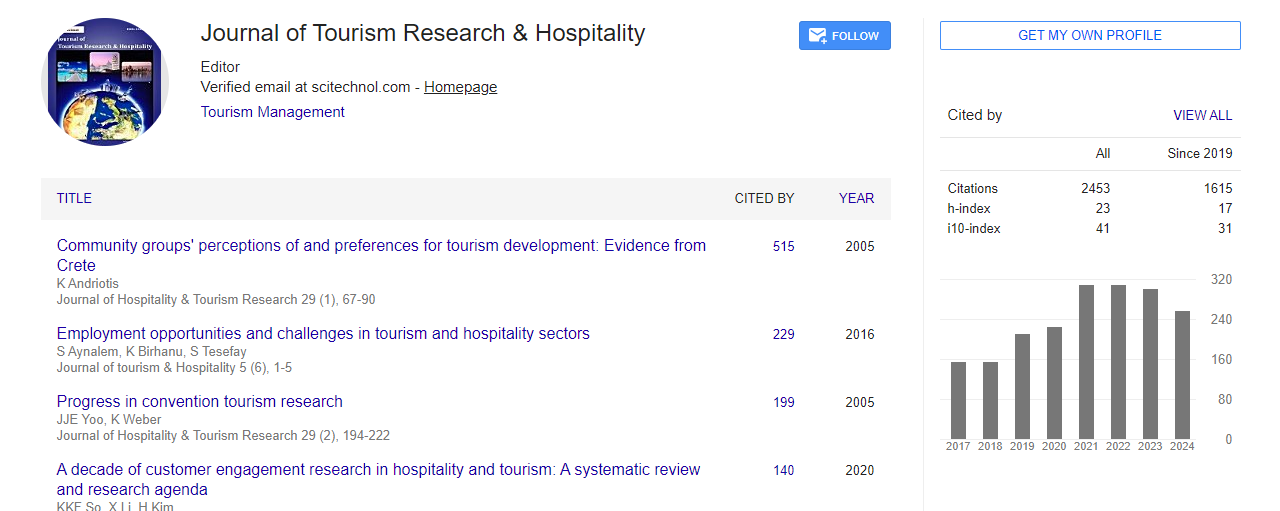Research Article, J Tourism Res Hospitality Vol: 1 Issue: 4
TerrorScale: A Scale to Measure the Contact of International Tourists with Terrorism
| Cláudia Seabra1*, José Luís Abrantes1 and Elisabeth Kastenholz2 | |
| 1Polytechnic Institute of Viseu, Portugal | |
| 2Aveiro University, Portugal | |
| Corresponding author : Cláudia Seabra Higher School of Technology and Management, Polytechnic Institute of Viseu, Office 39, Campus Politécnico Repeses, 3504-510 Viseu-Portugal Tel: +351232480500; Fax: +351232424651 E-mail: cseabra@estv.ipv.pt |
|
| Received: September 19, 2012 Accepted: December 12, 2012 Published: December 19, 2012 | |
| Citation: Seabra C, Abrantes JL, Kastenholz E (2012) TerrorScale: A Scale to Measure the Contact of International Tourists with Terrorism. J Tourism Res Hospitality 1:4. doi:10.4172/2324-8807.1000108 |
Abstract
TerrorScale: A Scale to Measure the Contact of International Tourists with Terrorism
Terrorism is unfortunately part of our lives and will not simply disappear. Accepting its presence, the management and prevention of its negative consequences is a key issue. This is imperative not only for countries where terrorist attacks occur, but also for countries that may be affected indirectly. It is necessary to further consider this issue and create more effective instruments for crisis management, ideally based on cooperative solutions among industry, government agencies and tourism-related academic institutions. Although research on terrorism has been undertaken in the tourism domain, the specific concept of tourists’ contact with terrorism has never been operationalized. In this paper we develop a scale that measures the contact of tourists with terrorism. Insights from an empirical study of 600 international tourists indicate that this multi-dimensional scale incorporates three types of contact:
1) Direct, 2) Indirect and 3) Attention to/ Interest in Terrorism on the Media. Discussion centers on implications of this scale for theory development and in the context of strategic destination crisis management decisions. Directions for future research are also presented.
 Spanish
Spanish  Chinese
Chinese  Russian
Russian  German
German  French
French  Japanese
Japanese  Portuguese
Portuguese  Hindi
Hindi 

